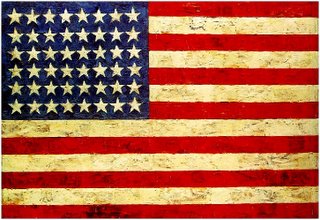
Ruth Brown, Oh What a Dream.
Patti Page, Oh What a Dream.
LaVern Baker, Tomorrow Night.
Elvis Presley, Tomorrow Night.
The fecund period of pop music between the mid-'50s and the mid-'60s was marked, among a host of other things, by the courtship and intermingling between "black" and "white" musical styles, something that, while it had been present in pop since the 1920s, had never before been achieved on such a massive and popular scale, much to the ire of racists and bewilderment of radio programmers.
Take Chuck Willis' "Oh What a Dream", featured here in two 1954 versions--one by Ruth Brown, the soul queen of Atlantic Records, and the other by Patti Page, the poster girl for '50s mainstream pop vapidity. Yet even while Willis wrote the song especially for Brown, there isn't that much difference between the two takes--Page's version swings far more than you'd imagine, with a piano riff straight out of New Orleans R&B, while Brown's, though she offers a richer vocal (in my opinion), is fairly stately.
And "Tomorrow Night" has an even more mixed pedigree. Composed by the Broadway songwriters Sam Coslow and Will Grosz in the late 1930s, it first became a standard for big bands, such as Ozzie Nelson (of "Ozzie and Harriet" fame) and Horace Heidt; then converted into early R&B by the Ink Spots and Lonnie Johnson. In 1954, there were two distinctive takes--one by LaVern Baker, in a rich, lavish pop production with Ink Spot-like backing vocals and even a 4-bar saxophone solo. And then, from Sun Studio, another take by Elvis Presley, in which the song is reduced to its sinews.
"Oh What a Dream": Page's version, which was a top 10 pop hit, is a bit hard to find on CD (those who want to spend $100 on Page, go here); Brown's, recorded on May 7, 1954, was released as Atlantic 1036 (find here).
"Tomorrow Night": Baker's take, recorded on October 20, 1954, was released as Atlantic 1047, the b-side of "Tweedle Dee" (find here); Elvis' masterful version, recorded on either September 9 or 10, 1954, was not released until 1985 (find here).
Top painting: one morning in 1954, the painter Jasper Johns woke after having dreamt about painting the American flag, so he set about doing so. He began with cheap furniture paint--house enamel--and found it wasn't drying fast enough ("it's a very rotten painting - physically rotten - because I began it in house enamel paint", Johns said later) so he decided on something he had heard about a while before, wax encaustic. Wax encaustic, the same type of material used by ancient Egyptians to adorn mummies, consists of taking pigments, dissolving them in molten wax and then applying the result to a canvas.
So Johns, after covering a bit of plywood with enamel, then layered scraps of newspaper on the surface, to which he applied the wax encaustic (bits of newspaper text are still visible on the final painting, which hangs at the Museum of Modern Art--you can't really see them in a compressed, digitized image).
American flags are "things the mind already knows", Johns would say later. Prints of it now are available as "patriotric art" under the category "September 11th" here.
No comments:
Post a Comment